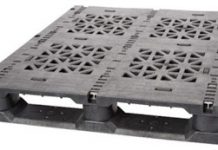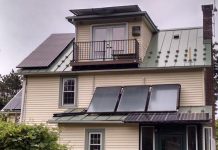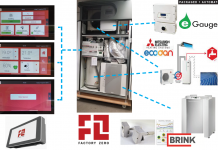Tom Konrad CFA

Last week, a prominent display of $10 LED light bulbs from Cree, Inc. (NASD:CREE) arrested my attention as I entered a home improvement store.
These were officially launched in March, and are similar to a 40 watt-equivalent bulb I bought in 2009. I still have that bulb, which I use for outdoor lighting, because Compact Fluorescent Lights (CFLs) take too long to warm up in the winter. It’s still going strong. The only problem: it cost $50, and used as much energy as a CFL for the same amount of light.
Four years later, we have a five-fold drop in price, and the energy use is better as well: these are 6 watt bulbs (with similar light output,) while my old one was an 8-watt bulb. Cree also has a $13, 60-watt equivalent bulb.
Cree is not alone in improving the efficiency, light output, and price of LEDs to challenge fluorescents. On Friday, Koninklijke Philips Electronics (NYSE:PHG) launched a replacement for conventional T-12 fluorescents widely used in offices. Because fluorescents are so efficient, previous LED replacements had to compete on other attributes – such as fewer replacements. While replacing a bulb is usually a trivial task for a home-owner, when you are paying maintenance workers salary and benefits to go around a building with a ladder replacing bulbs, the costs can add up. This is especially true in hard-to-reach applications.
Phillips’ new bulbs can now compete on energy usage as well: they produce about 200 lumens of light per watt, approximately twice as much as a typical office fluorescent. But I expect a more significant driver of adoption will be improved light quality. Happier workers are a much bigger benefit to companies than saving a few dollars on their electric bill.
Stocks
With new price points and higher efficiency, LEDs seem set for rapid growth in market share.
Not every LED stock will benefit equally, however. Pure-play LED companies like Cree and Revolution Lighting Technologies, Inc. (NASD:RVLT) are likely to gain more than broader lighting companies like Phillips and Acuity Brands (NYSE:AYI).
Navigant Research predicts that while logbal LED lamp sales to commercial buildings will grow by 23% per year for the next 8 years, the longer life of LEDs will cause industry revenue from lamp sales to decline slightly over the coming decade.
All that said, I worry that LEDs today are where solar was a few years ago: in danger of chronic overcapacity as new players jump into a rapidly growing market.
I initially thought that LED equipment suppliers like Aixtron SE (NASD:AIXG) and Veeco Instruments. (NASD:VECO), as well as upstream play is Rubicon Technology, Inc. (NASD:RBCN), which sells monocrystalline sapphire for LEDs as well as radio frequency and optoelectronics. In solar, upstream players were profitable for longer than solar manufacturers, although they, too, eventually felt the competitive heat.
Of these three upstream players, Veeco has the best exposure to LEDs. Aixtron sells deposition equipment to the larger semiconductor and compound semiconductor industries, while Veeco makes equipment used in the manufacture of LEDs, solar and hard disk drives. LED equipment accounts for most of Veeco’s revenues, but only a fraction of Aixtron’s. Rubicon is somewhere in between.
I’m not sure what the competitive situation for Rubicon is, but Aixtron and Veeco are already feeling the heat. Taiwan’s DigiTimes reported that Veeco and Aixtron had slashed prices for their equipment on April 17th.
Conclusion
I suspect that the $10 bulb may be the price point where consumer demand begins to take off, but if too many would-be miners join the gold rush for limited LED revenues, none of them will make any money.
In elementary school, I learned that the surest way to get rich in the California Gold Rush of the late 1840s was to sell picks and shovels to would-be miners. It seems like even that “tried and true” method won’t be enough to make money in the LED Gold Rush. Better to stick to being the jewelery buyer, and benefit from the rapidly growing supply and falling price of LED gold.
A previous version of this article was first published on the author’s Forbes.com blog, Green Stocks on April 17th.
DISCLOSURE: No Positions.
DISCLAIMER: Past performance is not a guarantee or a reliable indicator of future results. This article contains the current opinions of the author and such opinions are subject to change without notice. This article has been distributed for informational purposes only. Forecasts, estimates, and certain information contained herein should not be considered as investment advice or a recommendation of any particular security, strategy or investment product. Information contained herein has been obtained from sources believed to be reliable, but not guaranteed.









